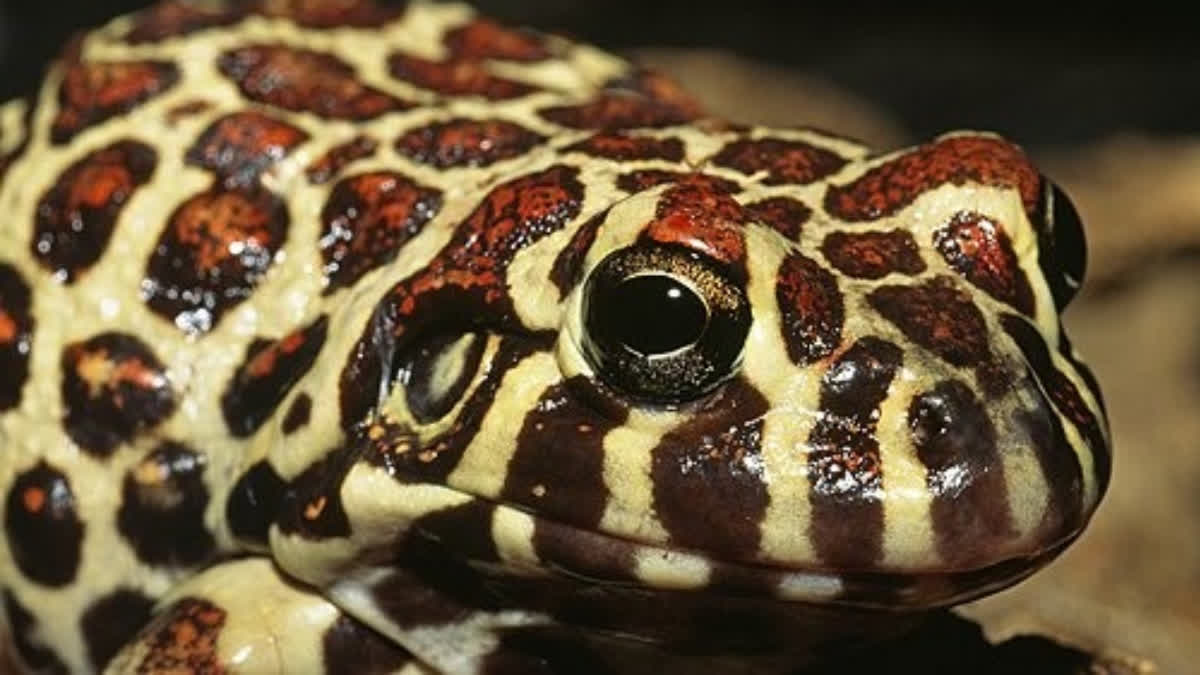Hyderabad: A team of all-female Argentinian conservation scientists are battling the 50C heat and the poisonous habitat of the world's driest forests, the Dry Chaco, to protect the puny Santa Fe frogs, also known as the "leopard-print" frogs. The species of Santa Fe frogs are under threat due to the cutting down of the Dry Chaco forest. The scientists discovered how they hide in caves, and emerge only during the night to perform their mating call. Scientists are curious to understand how they reproduce and have also found tadpoles of their species.
Scientist Isis Ibañez from Buenos Aires, also the head of the Santa Fe frog project, explained how it has been a difficult journey, but they are still adamant about securing the future of these wonderful amphibians. The Santa Fe frog, or Leptodactylus laticeps, are mostly unknown to science, even though it's been more than a century since they were discovered. The species of frog is native to Argentina, Bolivia and Paraguay, and are rare due to the loss of tropical dry forests.
The researchers have set up several camera traps throughout the location to find the brightly-coloured amphibians and understand their behaviour. The usual practice of attracting a mate by calling loudly from a pond, swamp or stream lacks in these frogs, as they live under the ground. The researchers found that males in this species emerge from their burrows at nightfall to announce their presence, and then hop back down with interested females.
Also read: Octopuses' sleep found to have active and quiet phases, similar to human sleep
The researchers were able to find evidence of eggs and tadpoles for the time after digging for hours at night. To protect the frog in the wild, the initial step would be to understand its breeding behaviour. These conservation scientists hope to draw attention towards the biodiversity of the Dry (or Grand) Chaco, by highlighting the plight of these frogs and other animals at the risk of extinction.
According to researcher Camila Deutsch, this species sets an example for people to defend the forest in the Dry Chaco with limited time. With the help of local community leaders, farmers and hunters, the scientists are trying to learn more about the frog to protect it better. Spread over parts of Bolivia, Paraguay and Argentina, Grand Chaco is a large expanse of forest and dusty plains.
Over the past decades, the Woodlands in Grand Chaco have been cleared to cultivate cropland and ranches. Even though it has one of the highest deforestation rates on earth, Grand Chaco attracts lesser attention than its neighbour, the Amazon. Due to its inaccessibility and extreme temperatures, the area has been named "El Impenetrable" and "hell on Earth" by the locals. With very little rainfall, the temperatures in this area can reach 50C during the daytime.
Even with such harsh conditions, the place's thriving wildlife includes different birds, reptiles, mammals and amphibians. According to a research team member Gabriela Agostini, this is a dry forest with incredible biodiversity. For about 40 years now, a pathogenic fungus has been devouring populations around the world, causing a high risk of extinction for amphibians. Habitat loss and hunting have also put animals under a lot of pressure to survive on their own.



